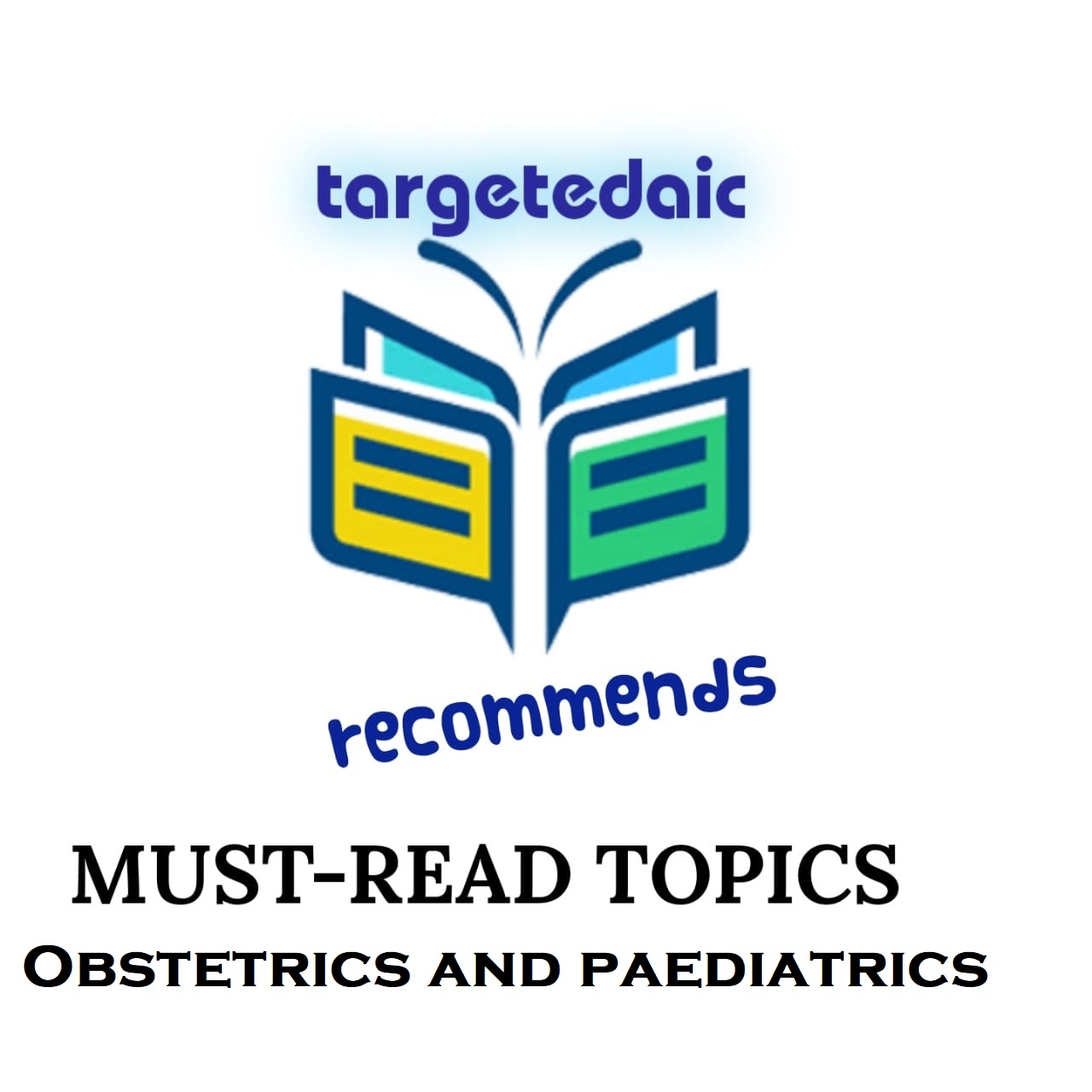Obstetrics and paediatrics are among the most frequently asked topics in both parts of the EDAIC examinations. Fortunately, the questions revolve around limited topics and specific blocks that are not very difficult to memorise and retain, provided you know where to concentrate your efforts. This list includes the most common exam questions that you are likely to be asked in the EDAIC examination. Although the examiner is at liberty to test or ask anything, there are all-time favourites that you must know.
To make the challenging terrain a little less painful, we have tried to compile a list of the most important topics to be read from these systems, a bare minimum yet essential topics’ compilation.
Targetedaic recommends: What to read in Obstetrics and Paediatrics
OBSTETRICS
- Physiological changes of pregnancy.
- Anaesthetic management of vaginal delivery for placenta previa patient.
- Pregnancy-related changes, including graphs of how physiologic variables change.
- Primigravida inserted epidural and after 2 days complained of numbness in lower limbs. Management asked about epidural hematoma incidence! And they want to hear about nerve injures with lithotomy as the MRI seems to be normal).
- PIH.
- Anaesthesia for emergency CS & difficult airway management.
- Amniotic fluid embolism (Definition, C/p, Management).
- Management of difficult intubation in the obstetric patient (with and without fetal distress).
- Labour analgesia.
- Mendelson syndrome.
- ACLS in obs
- Aortocaval compression. Causes and how to manage.
PAEDIATRICS
- Paediatric anaesthesia considerations
- Paediatric anatomy and physiological differences from adults. Pay attention to airway, renal and pulmonary maturation. Can ask about analgesia management
- Fluid and drug management
- Temperature regulation and perioperative management
- PALS
- Anaesthesia for neonates
- Body response to hypovolemia and estimation of blood loss in Pediatrics.
- Clinical case: A 4-year-old child was involved in RTA presented to ER awake, then his consciousness deteriorated (GCS 4/15). What is your management
- Perioperative management of the child with penetrating eye injury.
- Clinical Case: 5-year-old boy complained about bleeding 6 hours after tonsillectomy. The patient told his mother that he feels sick. The nurse was sure that was no bleeding in PACU. BP 90/50 HR 126 RR 24/min. How to manage? Discuss management in detail.
- TEF (tracheoesophageal fistula): management and suppose fistula is at the carina. What will you do?
- Post tonsillectomy bleeding in (or not in shock yet). Management, shock assessment and grades, rapid sequence induction, doses of rocuronium and Sugammadex.
- 5-week-old patient with pyloric stenosis. He is unwell. The surgeon wants to operate as an emergency list. Tell me about your case management.
- 4-year boy was brought to you H/o of immersion in the swimming pool. Unconscious, HR 50, dilated pupil. Management of the case.
- Congenital heart disease. Cyanotic vs acyanotic. Causes of unequal pulse/ saturation upper limbs. How to calculate shunt? What factors increase the right to left shunt.
- TOF and corrected TOF. Cyanotic spells. How to manage?
- Persistent pulmonary hypertension.
- Burns and drowning in kids
- Regional analgesia in paediatrics. Most frequently asked: caudal. Differences to be considered when administering RA in paediatrics.
FOR MUST-READ TOPICS IN THE RESPIRATORY SYSTEMS, CLICK HERE.
FOR MUST-READ TOPICS IN THE NERVOUS SYSTEM, CLICK HERE.
FOR MUST-READ TOPICS IN THE ENDOCRINE, METABOLIC AND NEUROMUSCULAR SYSTEMS, CLICK HERE.
FOR MUST-READ TOPICS IN THE PAIN AND REGIONAL ANAESTHESIA, CLICK HERE.
FOR MUST-READ TOPICS IN THE PHARMACOLOGY, CLICK HERE.
-
 Radiology for the Anaesthetist₹1500.00
Radiology for the Anaesthetist₹1500.00 -
 Cardiovascular physiology module by targetedaic₹1000.00
Cardiovascular physiology module by targetedaic₹1000.00 -
 Statistics module by targetedaic₹500.00
Statistics module by targetedaic₹500.00


